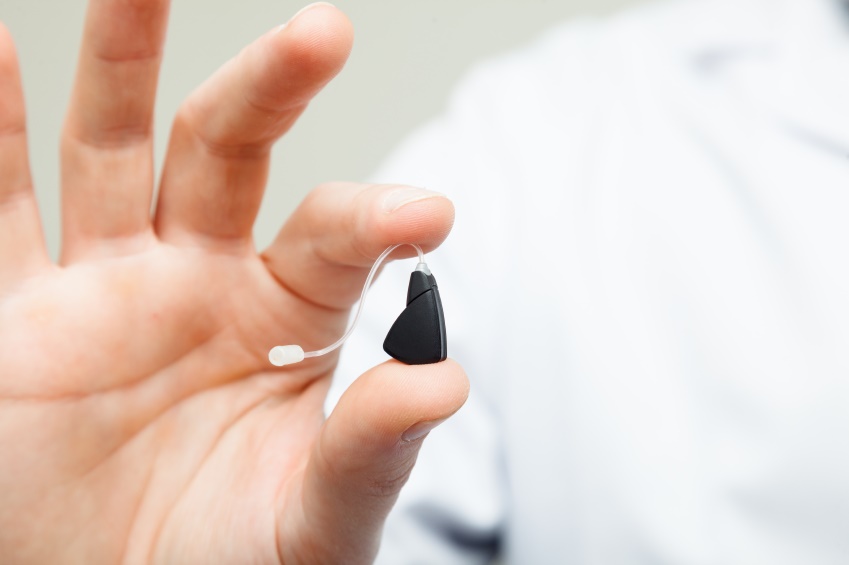
Hearing aid guides are not hard to find, but the majority are not quite reader-friendly, either. Most are generally too long or complicated, resulting in more perplexity rather than less.
My guess is that you’re a great deal less interested in the physiology of hearing or in the particulars of acoustical engineering and a lot more interested in finding the most suitable technology at a reasonable price. Your objective is to hear better, not to read a 15-page manual.
If that describes you, then you’ll enjoy this concise guide to hearing aids. We’ll cover four small sections, and when we’re finished, you’ll be set to work with your hearing care professional to discover the technology that’s best for you. Let’s get started.
How All Hearing Aids Work
Deciding on a hearing aid can feel overwhelming—there are a number of brands and seemingly limitless considerations. But it’s not as complicated as it seems. As you move forward through this guide, try to remember that all digital hearing aids work essentially the same way, and include these four fundamental parts:
- The microphone registers external sound and sends it to the digital processor.
- The digital processor modifies the sound signal according to the settings programmed by the hearing specialist. The customized sound signal is then transmitted to the amplifier.
- The amplifier increases the volume of the sound based on the programmed settings, amplifying only the frequencies the individual has trouble hearing (while suppressing background noise). This signal is next delivered to the speaker.
- The speaker delivers the enhanced sound to the ear, resulting in louder, clearer sound.
Additionally, all hearing aids include a battery, volume and setting buttons, and remote controls.
Hearing aids really only differ in two significant ways: 1) style, and 2) advanced features. We’ll address these in the next two sections.
Hearing Aid Styles
You have your choice of three main styles:
1. Behind-the-ear (BTE) hearing aids hook over the top of the ear and rest behind the ear. The case is then attached to an earmold in the ear canal by a piece of clear tubing. BTE hearing aids are easy to handle and clean, generally have a longer battery life, and can manage severe hearing loss.
2. In-the-ear (ITE) hearing aids occupy the external part of the ear with a custom-molded shell. ITE hearing aids are smaller than the behind-the-ear hearing aids but bigger than the in-the-canal styles. This renders ITE hearing aids easier to handle than the smaller styles but less noticeable than the BTE style.
3. In-the-canal (ITC) hearing aids and completely-in-the-canal (CIC) hearing aids fit partly or entirely within the ear canal, causing them to be nearly or entirely invisible. ITC and CIC hearing aids are custom molded to the shapes of the ear, and some can be used for several months at a time.
When choosing a style, weigh the tradeoffs among simplicity of use, battery life, and concealment. Your hearing care professional will help you prioritize your preferences and decide on the appropriate style.
Hearing Aid Advanced Features and Accessories
Once you’ve decided on the most suitable style, you can determine which of the following features you need—and which you don’t.
- Directional microphones enable you to concentrate on the sounds and conversations directly in front of you while reducing the interruption of loud background noise.
- Telecoils, or T-coils, allow you to talk on the phone while cutting down on the static brought on by background noise.
- Environmental noise control allows you to optimize hearing based upon your environment, for instance in a tranquil room at home as opposed to in a bustling restaurant.
- Direct input to sound sources such as TVs, radios, computers, and music players allow for clear sound without background noise.
- Wireless connection to mobile phones transforms your hearing aids into top-notch wireless headsets. The hearing aid settings can be regulated from your phone (or smart watch), and sound can be wirelessly streamed straight from the phone to the hearing aids.
Optional accessories include cleaning systems, storage cases, ultraviolet sanitizers, battery-changers, and more. Your hearing care professional can help you decide which you may need or want.
Choosing the Right Hearing Aids
Before investing in hearing aids, take these four steps:
- Find a reputable, local hearing care professional. Only professionals with ample experience can assess your hearing properly, which is essential for when it comes time to program, fit, and calibrate your hearing aids.
- Focus on hearing aid styles and advanced features. Your pick of hearing aids will depend on your preference of style and function. Discuss these two facets with your hearing specialist and your options will become manageable.
- Develop a budget. Some would assert that your hearing is priceless, but that doesn’t imply you have an unlimited budget. With all of the hearing aid options available to you, you and your hearing specialist can find the right hearing aid at a reasonable price.
- Test drive your new hearing aids. Ask about trial periods and test out your new hearing aids. Talk with your hearing specialist to establish reasonable expectations and give your hearing aids an opportunity to show results. Your persistence will be paid back when you realize the difference better hearing will make in your life.
And that’s it. What seems like a complex process is in truth easily workable, once you understand how to prioritize your needs and limit your options. With the help of your local hearing care professional, you can obtain the most suitable technology at the right price—so you can start experiencing all of the rewards of better hearing.